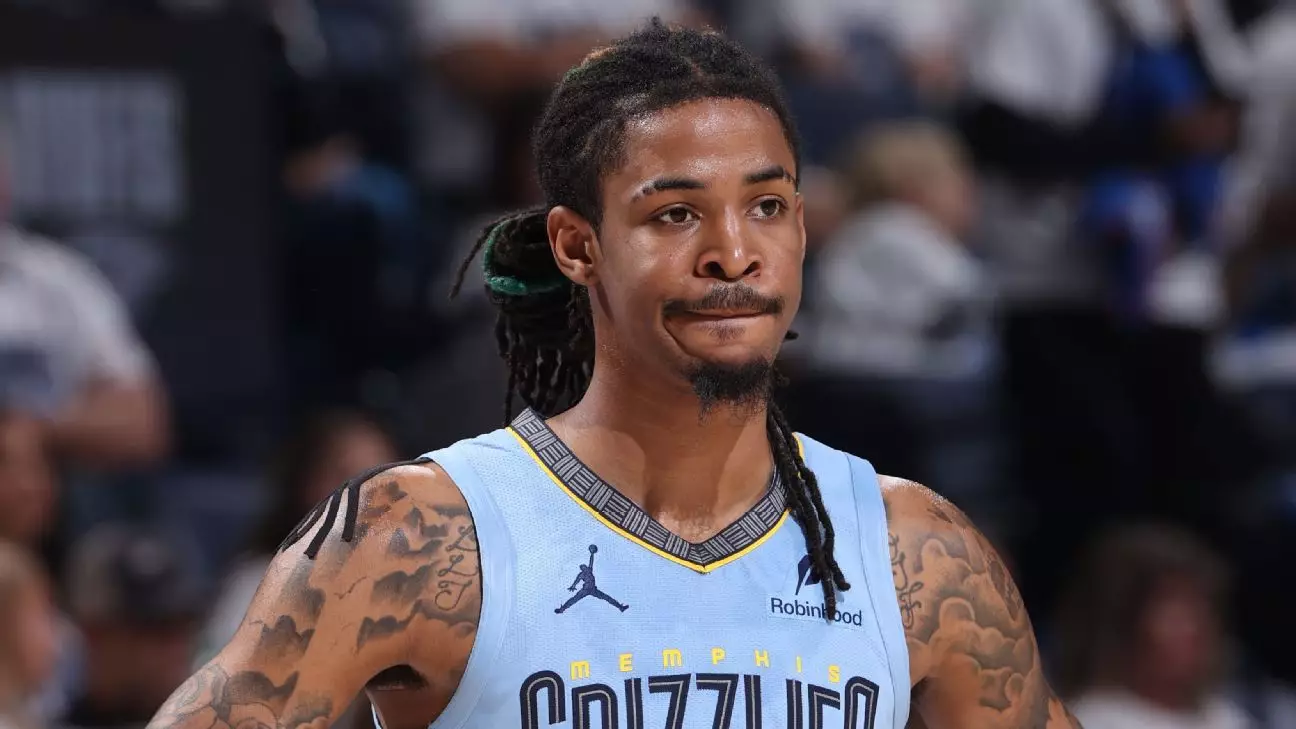In the world of sports, the overlap between competition and camaraderie can sometimes blur, leading to unexpected confrontations. One such incident occurred during a seemingly innocent pickup basketball game in July 2022, a situation that escalated into a legal battle involving NBA star Ja Morant and a teenage player, Joshua Holloway. What might usually be dismissed as a sports-related dispute turned into a complex courtroom saga that delved into the nuances of self-defense and civil liability.
Holloway, who was 17 at the time and had just completed his sophomore season with Samford University, accused Morant of assault after the two engaged in a competitive game at the home of the Memphis Grizzlies guard’s parents. The pivotal moment came when Holloway allegedly threw the basketball at Morant, hitting him in the face, prompting Morant to respond with a punch. This act of retaliation sparked a series of legal wranglings that would ultimately explore the boundaries of self-defense in a civil context.
The Legal Framework of Self-Defense
Morant’s case rested on Tennessee’s „stand your ground“ law, which allows individuals to use reasonable force when they perceive a threat. This legal doctrine has long been a point of contention in American law, often evoking passionate debates about its implications and applications. The key question in Morant’s situation was whether his response to Holloway’s actions constituted a reasonable act of self-defense or if it crossed an invisible line into aggressive retaliation.
The testimony presented in court painted conflicting portraits of the event’s dynamics. Morant maintained that he felt endangered after Holloway’s aggressive actions, describing a series of gestures, including a fighting stance that allegedly contributed to his decision to throw a punch. In stark contrast, Holloway argued that Morant was the aggressor, suggesting that the punch was an excessive and unprovoked response.
Judicial Perspective on Credibility
In a remarkable turn of events, Shelby County Circuit Judge Carol Chumney ruled in favor of Morant, citing a presumption of civil immunity based on the self-defense claim. The judge’s decision hinged largely on the credibility of the testimonies offered during the hearings. She deemed Holloway’s account as inconsistent, indicating that it contradicted statements from other witnesses present at the scene, including former NBA player Mike Miller, who indicated that Holloway’s actions had triggered the escalation.
This ruling underscores a pivotal aspect of legal proceedings—credibility can often outweigh objective facts in determining outcomes. The courtroom, much like a basketball court, is a place where narratives unfold, and the ability to convey one’s story convincingly can often tip the scales of justice. Judge Chumney’s acknowledgment of the contrasting leadership roles both Morant and Holloway play in their respective communities highlights the broader implications of their actions, showing that personal accountability extends beyond the basketball court into societal influence.
The Aftermath and Broader Implications
Even as the lawsuit comes to a close, the ramifications of this incident permeate the sports world and beyond. Both Morant and Holloway occupy spaces of influence and inspiration; their leadership roles present opportunities to model positive behavior—not only for fans but for younger aspiring athletes who watch their every move. The court’s decision urges both players to redirect their energies toward constructive endeavors on the court rather than engaging in disputes that might tarnish their reputations and roles as mentors.
The legal implications of this case also emphasize the delicate balance between competition and sportsmanship. Athletes, often viewed as icons, bear the significant responsibility of demonstrating restraint, composure, and maturity, especially in high-stress scenarios. Morant’s legal victory serves as a reminder that actions taken in the heat of competition can reverberate far beyond the game itself, impacting careers and lives.
Furthermore, cases like this one create an environment ripe for discussions about the intersection of law and sporting culture. They compel us to reconsider how emerging adults navigate the complexities of conflict resolution, aggression, and personal accountability. In an era where sports are heavily scrutinized, both on and off the field, fostering a culture of respect and understanding is more crucial than ever for athletes, leagues, and fans alike.


Napsat komentář